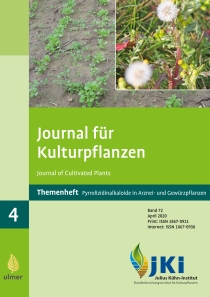Risks of pyrrolizidine alkaloids in tea and herbal infusions
DOI:
https://doi.org/10.5073/JfK.2020.04.02Keywords:
pyrrolizidine alkaloids, tea, herbal infusion, risk assessment, exposure assessmentAbstract
Pyrrolizidine alkaloids (PA) are secondary plant metabolites which are produced by a large number of plants, e. g. to ward off herbivores. PA with a double bond in the 1,2-position are of toxicological relevance. These derivatives can cause adverse health effects in humans and animals, with the liver being the major target organ. Besides the known hepatotoxic effects, 1,2-unsaturated PA may also damage DNA and may be carcinogenic. The occurrence of these compounds in foods is primarily caused by contamination with wild herbs. In the assessment published in 2016 by the German Federal Institute for Risk Assessment (BfR), consumption of contaminated tea and herbal tea was the main source of exposure for the population to 1.2-unsaturated PA in Germany; however, other foods can also contribute to intake. The present study, which focuses exclusively on tea and herbal tea, shows that levels of 1,2-unsaturated PA in this food group have decreased significantly compared to 2016. Nevertheless, persons who consume high amounts of herbal tea or rooibos tea in the long term may still be exposed to intakes that result in a margin of exposure of less than 10,000, which is why it still seems appropriate to implement measures to reduce the levels.








